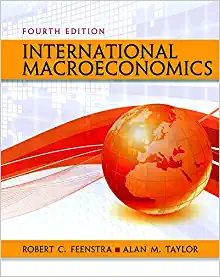1. Consider the production of handmade rugs and assembly line robots in Canada and India. Use the Hecksher-Ohlin model to answer the following questions. a.
1. Consider the production of handmade rugs and assembly line robots in Canada and India. Use the Hecksher-Ohlin model to answer the following questions.
a. (2 points) Which country would you expect to be relatively labor-abundant, and which is capital-abundant? Why?
b. (2 points) Which industry would you expect to be relatively labor-intensive and which is capital-intensive? Why?
c. (3 points) Given your answer to (a) and (b), draw production possibilities frontiers for each country. Assuming that consumer preferences in each country are identical, add indifference curves and relative price lines (without trade) to your PPF graphs, and label point "A." What do the slopes of the lines tell you about the likely consumer response and the direction of trade if these two countries were suddenly able to trade with each other?
d. (3 points) Allowing for trade between the countries, redraw the graphs (including indifferences curves; label all key points) and include a "trade triangle" (show imports and exports) for each country. Identify and label the vertical and horizontal axis of the triangle as either imports or exports. Discuss the intuition behind why the country would produce
Step by Step Solution
There are 3 Steps involved in it
Step: 1

See step-by-step solutions with expert insights and AI powered tools for academic success
Step: 2

Step: 3

Ace Your Homework with AI
Get the answers you need in no time with our AI-driven, step-by-step assistance
Get Started


